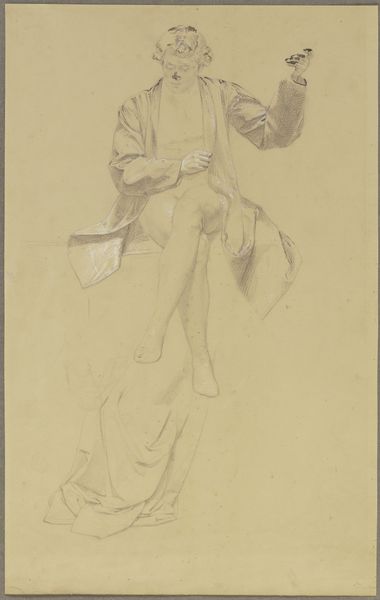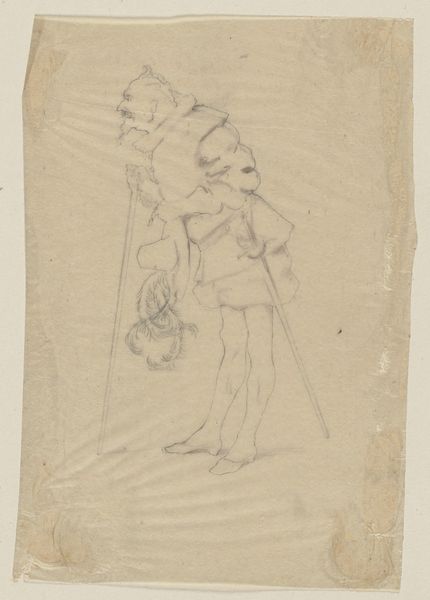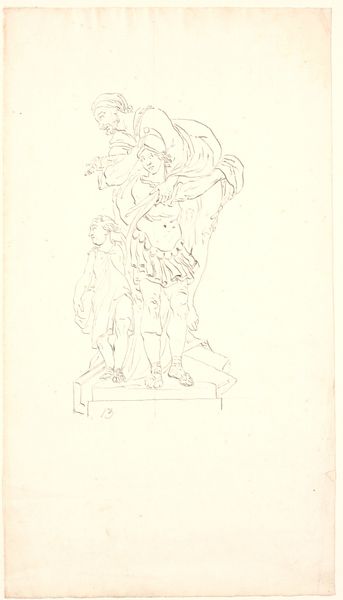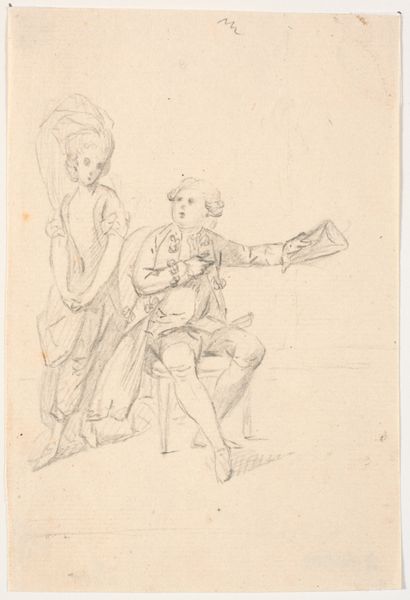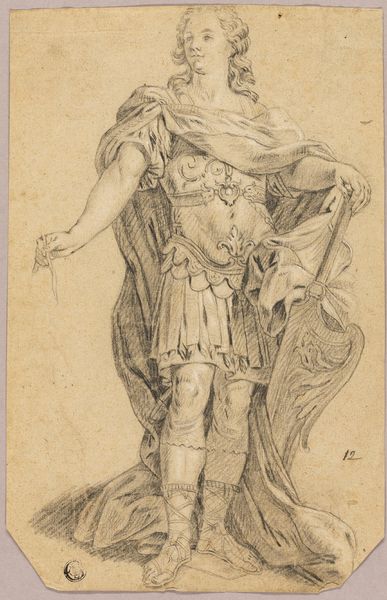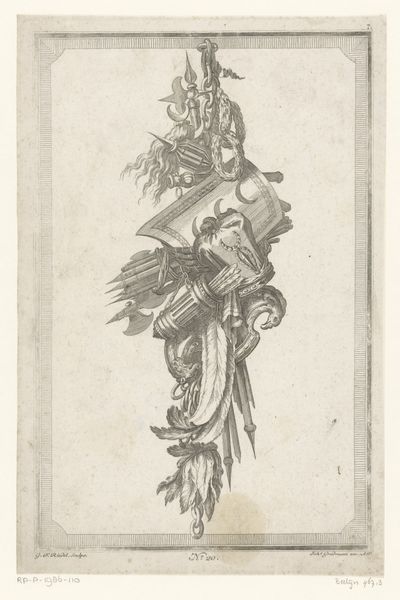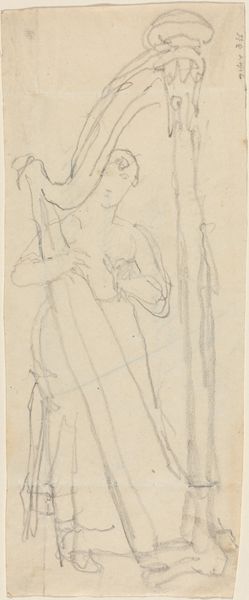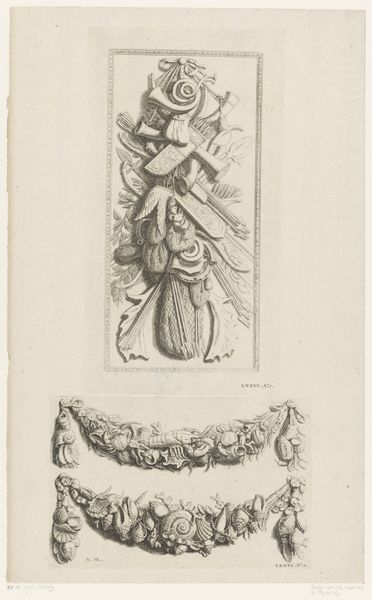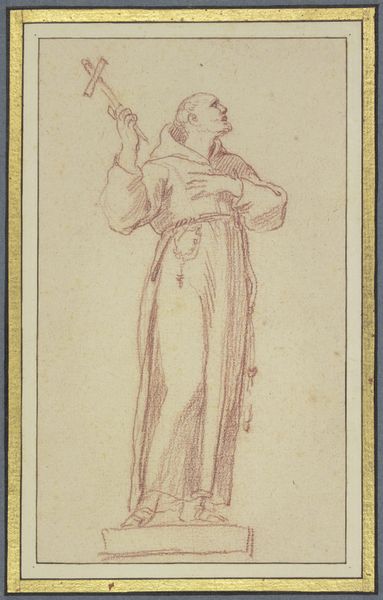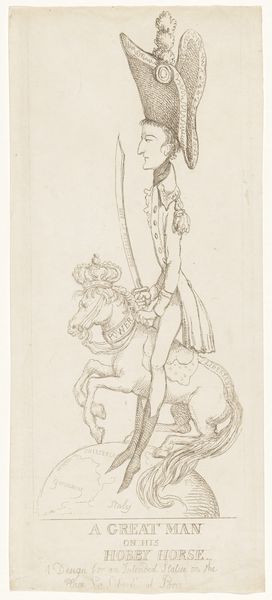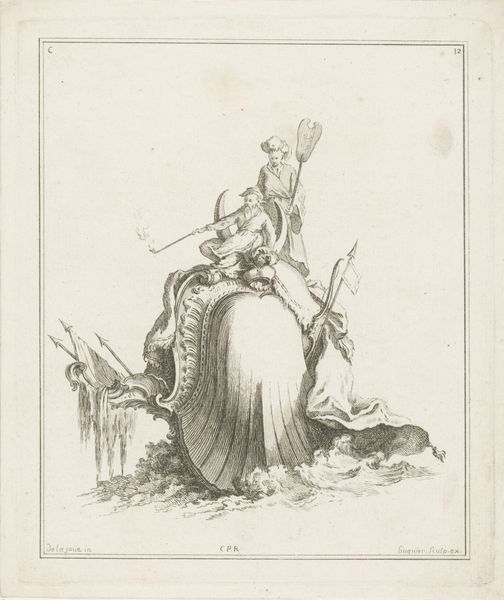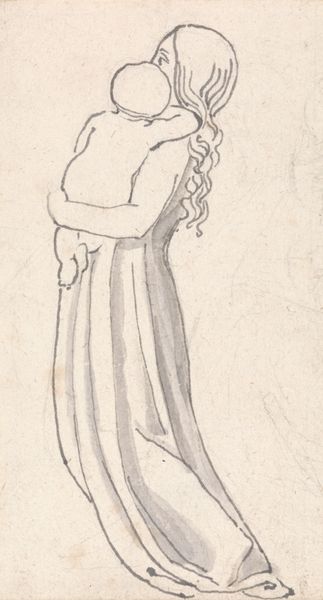
Vrouwelijke personificatie van Theoretica / Bespiegeling 1785 - 1836
0:00
0:00
johannesjelgerhuis
Rijksmuseum
drawing, ink, pen
#
portrait
#
drawing
#
neoclacissism
#
allegory
#
pen illustration
#
pen sketch
#
figuration
#
ink
#
line
#
pen
Dimensions: height 239 mm, width 178 mm
Copyright: Rijks Museum: Open Domain
Curator: Before us, we have Johannes Jelgerhuis’ drawing "Vrouwelijke personificatie van Theoretica / Bespiegeling," created sometime between 1785 and 1836. It’s currently held here at the Rijksmuseum. Editor: It has a delicate quality. Almost ethereal, wouldn't you agree? The lightness of the pen and ink seems to make the allegorical figure float off the pedestal. Curator: Jelgerhuis worked with pen and ink in such a detailed, precise manner. Look at the material elements closely. The lines that shape the figure are very controlled, clearly showing his technique. You can sense that precision was vital to expressing Neoclassical ideals. Editor: Absolutely. And in this context, it really seems a comment on the role of museums in shaping what is considered “art." This image appears to be part of a larger trend within Neoclassicism—a reflection of theoretical principles made accessible. Curator: Note too, the title: both Theoretica and Bespiegeling which translates to Reflection. The artist cleverly uses those two titles and you can think about them in terms of how materials impact meaning. The pen allows fine lines and precise reflections which are ideas central to this work. Editor: I see that now, considering its purpose, this pen drawing acts almost like a prototype, its form alluding to the ways in which public knowledge about these subjects spread among classes. This object creates value in relation to institutions. Curator: Exactly! This image invites one to contemplate its own form but I am taken in how the materials and production process reinforce classical ideas with an elegant style that feels distinctly late eighteenth and early nineteenth century. Editor: I agree! By examining the social and artistic history of the image it's clear this allegorical piece is more than just a symbol for philosophical exploration, but is an art object entrenched within its specific period.
Comments
No comments
Be the first to comment and join the conversation on the ultimate creative platform.
